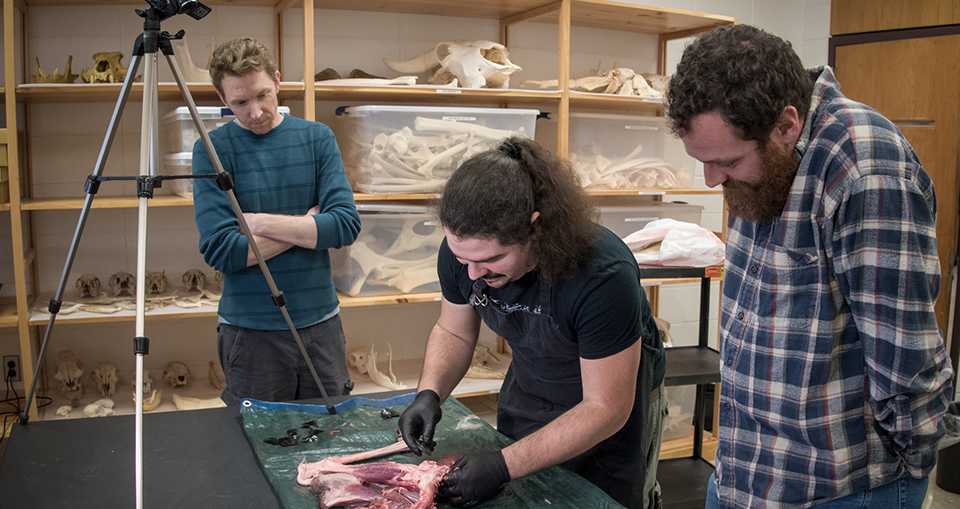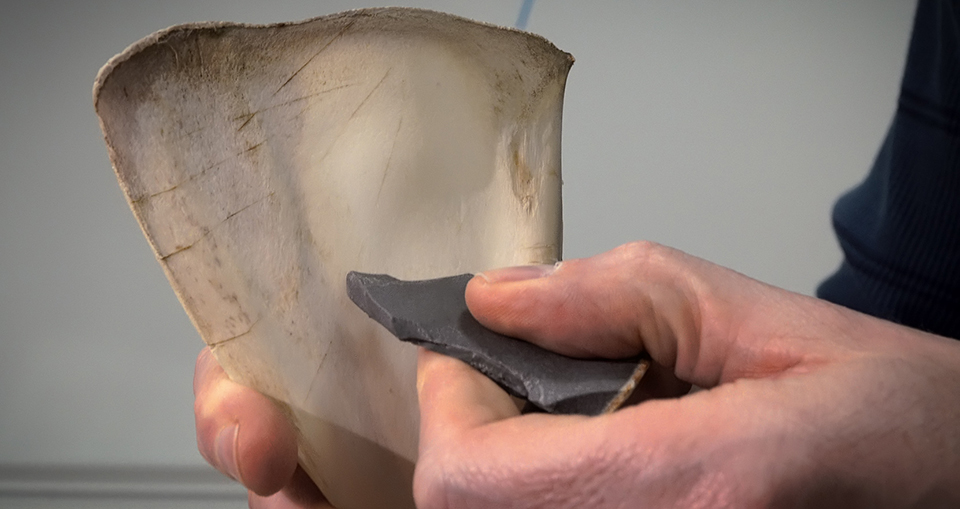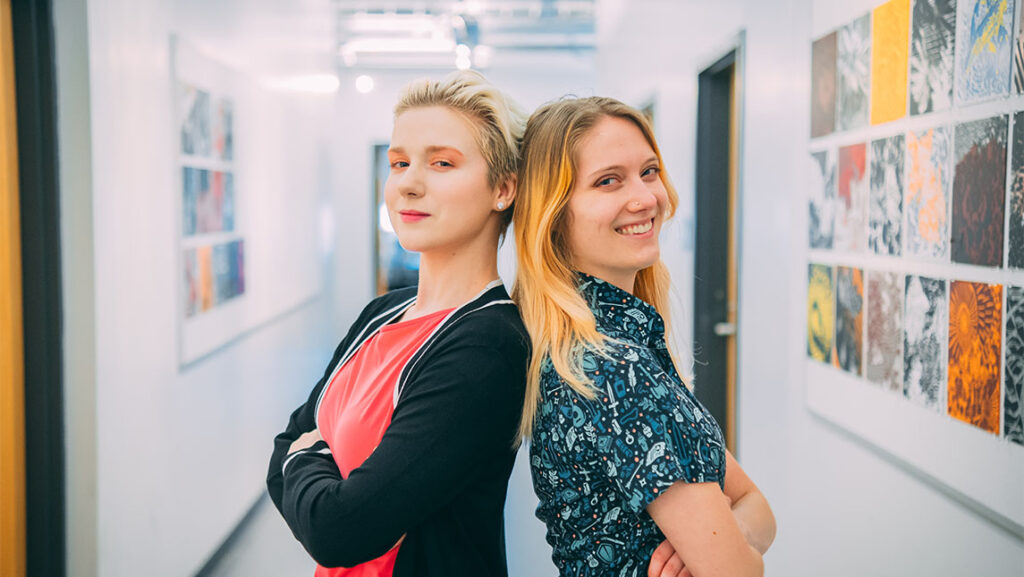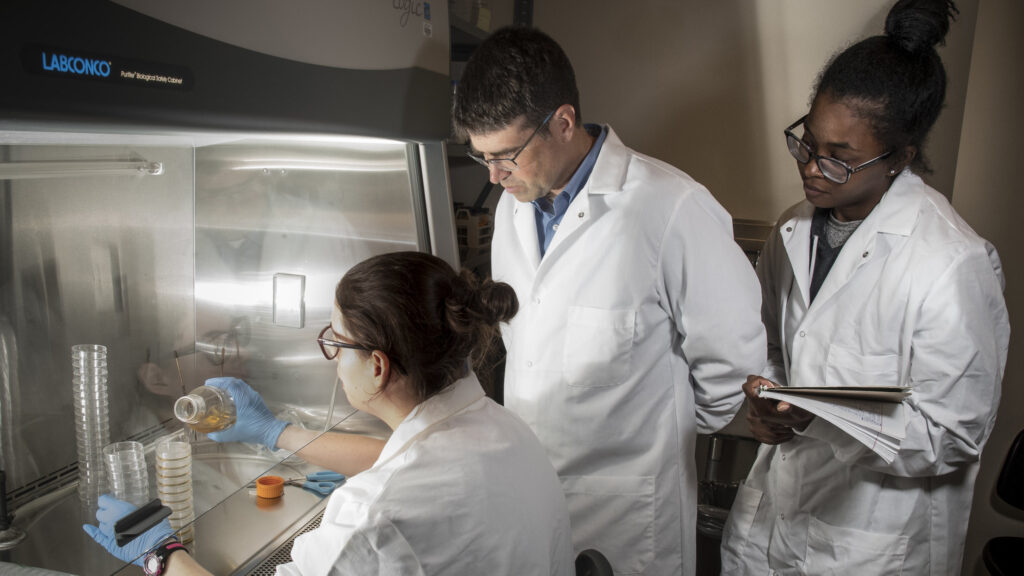Repost from UNCG NOW
UNCG takes pride in its hands-on, experiential learning opportunities.
Whether it’s through innovative teaching in the classroom or undergraduate research in the lab, UNCG faculty want students to not only learn the material, but to get their hands dirty in the process.
For students Kevin Covell and Robert Sanderford, “getting their hands dirty” is an understatement.
Under the leadership of Dr. Charles Egeland, the two anthropology students participated in an undergraduate research project this spring that explored the evolution of skill acquisition through animal butchery.
The acquisition and butchery of large mammals with stone tools represents the earliest and most enduring manifestation of human interaction with technology. So how can we gauge butchery skill in a prehistoric context?
According to Egeland, the answer is in the “cutmarks,” or the incisions produced on the surface of the bones by stone tools.
“Researchers are just beginning to systematically test the relationship between experience and cutmarks,” Egeland said. “Our hypothesis was that experienced butchers would create cutmarks that are close to each other and make anatomical sense.”

Over the course of the semester, Egeland enlisted the help of Covell and Sanderford to test this relationship. Covell, an “expert” butcher who previously worked as a professional chef, and Sanderford, an “amateur” with experience hunting animals, met several times a month to butcher deer legs supplied by the North Carolina Department of Transportation. Other novice butchers participated as well.
The students used replicas of prehistoric stone tools to remove soft tissues from deer legs as if they were butchering for consumption. Egeland, Covell and Sanderford then identified the cutmarks, took high-resolution digital images of each cutmark cluster and used statistical analysis to analyze cutmark attributes.
The conclusion? Novice butchers left very different cutmark patterns on the bones relative to the more experienced butchers.
“If we can identify differences in cutmark orientation among skill levels in an experimental context, it gives us the opportunity to do so in archaeological contexts,” Egeland said. “This, in turn, may allow us to track the evolution of skill acquisition, at least as it pertains to animal butchery.”
Last month, Egeland presented the research findings at the annual meeting of the Society for American Archaeology in Vancouver. Covell and Sanderford were co-authors of the paper.
For the two budding anthropologists, it was a unique opportunity to not only participate in ground-breaking research, but to develop the kinds of skills – such as digital photography, image manipulation, utilization of geographic information systems (GIS) programs and specialized analytical skills – that will be used in the field.
“I’m excited about the skills we’ve acquired with this research,” said Sanderford, who will graduate this month. “I’ve definitely learned what goes into the research process.”
Ultimately, Egeland hopes this study and further studies will allow us to learn more about human culture.
“While humans are not the only species that have culture or make and use technology, the degree to which humans rely on culture and technology as a fundamental component of our adaptation is unique,” he said. “Therefore, tracking the development of skill acquisition opens a window to the evolution of human culture.”
Story by Alyssa Bedrosian, University Communications
Repost from UNCG NOW



